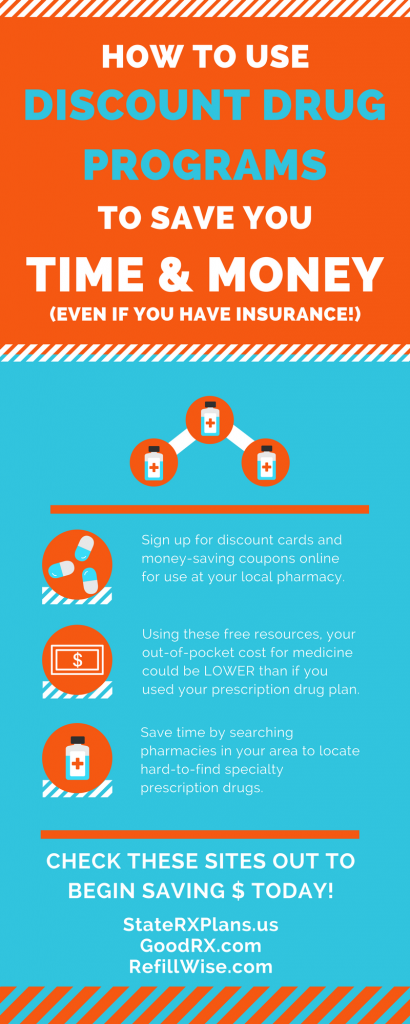
by admin | Jul 13, 2018 | Benefit Management, Human Resources

Life insurance blah blah blah. Is that what you hear when someone mentions it as part of your new job’s employee benefits round-up or when you see something about it on TV or social media? Not to worry: we’ve got the low-down on what you need to know. And it’s really not as overwhelming (or underwhelming) as you might think.
1. It’s part of a sound financial plan. You know about savings, you know about retirement. You might know a bit about investments and long-term financial planning for your health and happiness. And
life insurance helps with planning for your loved ones’ long-term health and happiness, especially those who depend on your income, in case something were to happen to you.
2. There are different kinds of life insurance. In addition to employment-based life insurance (which typically only lasts as long as your employment at your job), there’s term and permanent life insurance.
Term life insurance: You typically pay lower premiums for
term life insurance, but your coverage is just for a specified amount of time, say 20 years, for example. At the end of the term, your insurance coverage ends.
Permanent life insurance: With
permanent life insurance (whole, universal, variable) you typically pay higher premiums in the short term, but then these policies generally allow you to accumulate cash value over time. Your coverage is designed to last as long as you continue to pay premiums.
3. Life insurance is surprisingly affordable for most people. Sure, there are forms of life insurance that get pricier the more features you add on to it, and the price goes up if you’re a smoker or dealing with health problems. But most people think life insurance costs about three times as much as it really does, according to the
Insurance Barometer Study by Life Happens and LIMRA. Just as a general guide, a healthy nonsmoking 30-year-old man can get a $250,000 20-year level term policy for about $16 a month.
4. Key life events are often the best time to get on board. Getting married? Having kids? Changing jobs? Bought a house? Significant life events are often the time you become most aware of the need for life insurance—and on that note…
5. You can change your life insurance. Perhaps you have a life insurance policy that your parents got for you when you were a baby. Perhaps you have a term policy from when you bought your house but now you have a bigger family and you’re concerned about getting them all through college. Or perhaps you want to bump up your coverage because your overall cost of living has changed. And on *that* note …
6. You may well need more coverage than you think. Sometimes people think life insurance is to pay off their own debts and funeral expenses. But a key advantage of having life insurance is to ensure that the people who depend on you will be OK with their ongoing and future financial needs if something happens to you. Need help figuring this out how much? Go to this online calculator:
www.lifehappens.org/howmuch.
7. Life insurance pays out quickly. Because life insurance doesn’t get tangled up in estate claims, it generally pays out quickly, sometimes in days or weeks, usually inside of a month.
8. Life insurance proceeds are generally tax-free. Compare this to, say, crowdfunding options like “GoFundMe” that have become so popular yet create tax consequences for the people they’re meant to help (to say nothing of fees and the lack of guaranteed benefit). It’s also helpful when you’re trying to create an inheritance for a beneficiary.
9. Life insurance protects your family, but only if you let it. Keep your premiums paid up and your beneficiaries up to date, and the door with your agent open so that your loved ones know who to call if they need to. Keep your paperwork with your other vital documents.
10. Life insurance can be more than just life insurance. Using “riders,” or an addendum to a life insurance contract, or even a specific kind of policy, life insurance benefits can become “living benefits,” money you can access before you die, or use to pay for long-term care, as two examples.
If you still need help getting a handle on all this, talk to an agent. They can help you understand the ins and outs and the best policy for your budget and needs. Because of course—the most important thing to know about life insurance is that it’s there to help the people you love the most.
By Helen Mosher
Originally Published By Lifehappens.org

by admin | Jul 11, 2018 | Human Resources, Workplace
 More and more, we are learning that scientists, marketers, programmers, and other kinds of knowledge workers lead office lives very similar to famous innovators like Watson, Crick, and Franklin, who discovered the structure of DNA. How so? All of these people live work lives structured around progress in meaningful work. And when this progress occurs, it boosts emotions, perceptions, and productivity.
More and more, we are learning that scientists, marketers, programmers, and other kinds of knowledge workers lead office lives very similar to famous innovators like Watson, Crick, and Franklin, who discovered the structure of DNA. How so? All of these people live work lives structured around progress in meaningful work. And when this progress occurs, it boosts emotions, perceptions, and productivity.
This could be an important key to supporting your employees at their desks, wherever those may be. While recognition, tangible incentives, and goals are important, leading managers must also consider nourishing progress through attention to inner work life, minor milestones, and appropriate modeling.
When progress is effectively monitored and encouraged, it can lead to a self-sustaining progress loop, which often results in increased success and productivity, especially toward larger, group-based goals. In other words, when managers support inner work life and recognize minor progress, it leads to major accomplishments.
Seeing employees as growing, positive individuals with a drive to experiment and learn, as opposed to mere means to an end goal, can make all the difference in an office, and over the years. One way to do this effectively is to incorporate humility into your leadership style. This doesn’t imply that you have low self-confidence or are yourself servile. Rather, it says you prioritize the autonomy of your office and support your employees to think responsibly for themselves. Ask them what their daily work lives are like, and how you can help them maximize effectiveness. Create low-risk opportunities for growth, and most importantly: follow through.
Read More:
“Leading through emotions”
“Leading with emotional intelligence”
by Bill Olson, VP, Marketing & Communications at United Benefit Advisors
Originally posted on blog.ubabenefits.com

by admin | Jul 6, 2018 | Benefit Management
Did you know that you can save time and money on your prescription drugs by simply signing up for a discount card online? With savings as much as 80% off, these discount cards keep your health care costs down even when the prices of prescriptions are sharply rising.


by admin | Jul 3, 2018 | ACA, Benefit Management, Compliance, Group Benefit Plans
 On June 19, 2018, the U.S. Department of Labor released its Final Rule regarding Association Health Plans (AHPs). AHPs are not new, but they have not been widely available in the past and, in some cases, they have not been successful. The Final Rule is designed to make AHPs available to a greater number of small businesses as an alternative to standard ACA-compliant small group insurance policies.
On June 19, 2018, the U.S. Department of Labor released its Final Rule regarding Association Health Plans (AHPs). AHPs are not new, but they have not been widely available in the past and, in some cases, they have not been successful. The Final Rule is designed to make AHPs available to a greater number of small businesses as an alternative to standard ACA-compliant small group insurance policies.
This article answers common questions about AHPs under the current rules (which groups can continue to use) and the new rules.
Is group medical insurance the same for small and large employers?
Yes and no. Federal law imposes certain basic requirements on all group medical plans, regardless of the employer’s size. For instance, plans cannot exclude pre-existing conditions nor impose annual or lifetime dollar limits on basic benefits. If the plan is insured, it also is subject to the insurance laws of the state in which the policy is issued.
Small group policies, which are sold to employers with up to 50 or 100 employees, depending on the state, are subject to additional requirements. These policies must cover 10 categories of essential health benefits (EHBs), including hospitalization, maternity care, mental health and substance abuse treatment, and prescription drugs. (Some states allow certain grandfathered or grandmothered policy exceptions.) For most small employers, their options for group medical insurance are limited to small group policies that comply with the full scope of ACA requirements. On the other hand, the policies are subject to guaranteed issue and adjusted community rating rules, so carriers cannot refuse to insure a small employer nor use any past claims experience in setting rates.
Large group policies, which can only be sold to groups with at least 50 or 100 employees, depending on the state, are not required to cover all EHBs. Carriers have more flexibility in designing coverage options and developing premium rates in the large group market. This means larger employers have more options to choose from and may be able to purchase coverage at a lower cost than would apply to a small group policy. Note, however, that there is no guaranteed issue protection, so carriers can accept or reject each employer’s application or use the employer’s past claims experience in setting rates.
Lastly, self-funded plans are subject to the ACA and other federal laws, but generally are exempt from state laws. They typically are not feasible for small employers, however, due to the financial risk of uninsured programs.
What is an Association Health Plan (AHP)?
Group insurance covers the employees of an employer (or an employee organization such as a labor union). An AHP, as the name implies, covers the members of an association. Unrelated employers can obtain coverage for their employees through an AHP provided the employers form a bona fide association. Traditionally, this has meant that the employers had to have a “commonality of interest” and their primary interest had to be something other than an interest in providing benefits. For this reason, AHPs generally have been limited to associations formed by employers in the same trade, industry, or profession.
The Final Rule makes AHPs available to a wider range of businesses by expanding the meaning of “commonality of interest.” Once the Final Rule takes effect, an association may be formed by employers that are:
- In the same trade, industry, or profession, regardless of location; or
- In the same principal place of business; i.e., in the same state or in the same multi-state metropolitan area.
Under the new rules, the employer’s primary interest in associating may be benefits coverage, although they still will need to have at least one other substantial business purpose other than benefits. This is a key difference from the current rules.
When does the new Final Rule take effect?
The Final Rule expanding the definition of an association for purposes of an AHP will take effect on staggered dates:
- For fully insured AHPs: September 1, 2018
- For self-funded AHPs:
- If in existence on or before June 19, 2018: January 1, 2019
- If created after June 19, 2018: April 1, 2019
As noted, the new rules do not replace existing rules. Employers and associations may continue to follow the existing rules (which generally limit AHPs to employers in the same trade, industry, or profession). The new rules merely expand the opportunities for AHPs, such as making them available to employers in the same state or metropolitan area even if they are in different industries.
Are AHPs limited to employers with employees? What about sole proprietors?
Currently, sole proprietors, such as mom-and-pop shops without any W-2 employees, purchase medical insurance in the individual market. Individual policies often cost more than group policies or AHPs. The new rules will expand the availability of AHPs to include sole proprietors who work a minimum number of hours (so-called working owners).
What about state laws? Will AHPs be available nationwide?
Insurance products, including AHPs, are regulated by state law. Under both the existing and new rules, AHPs are multiple employer welfare arrangements (MEWAs). State laws on MEWAs are quite complicated. In some states, MEWAs are prohibited. In others, insured MEWAs are allowed but self-funded plans are prohibited. The laws vary from state to state, so different carriers will make different decisions about whether they want to design and market AHPs in various jurisdictions around the country.
A number of states are very concerned about AHPs and may prohibit them in their states or impose strict requirements to ensure they will provide reliable and effective coverage. Other states will view AHPs as cost-effective alternatives to ACA-compliant policies for small employers and look to encourage their expansion.
What’s next?
There is no clear answer to what’s next. Over the coming months, carriers across the country likely will review the reasons they have or have not offered AHPs in the past, and whether they want to consider new approaches in the future. Along with economic and market issues to consider, carriers also must consider the state insurance laws in different jurisdictions. At the same time, many state legislatures and insurance commissioners will be reviewing their existing rules and whether they want to promote or expand the availability of AHPs in their area.
Oh … and the lawsuits. Yes, that also is what’s next. As of this writing, attorneys general in different states are planning to join together in challenging the federal government’s Final Rule on AHPs. Their stated concern is that effective regulation is required to ensure that plans provide adequate coverage.
ThinkHR will continue to monitor developments in this area.
by Kathleen A. Berger
Originally posted on thinkhr.com

by admin | Jun 29, 2018 | Hot Topics
 New technologies are poised to fundamentally change the HR industry as we know it. Just as the smartphone revolutionized the way we communicate, artificial intelligence will reshape all areas of HR, from employee onboarding to learning management to developing top talent. And, similar to smartphones, these changes will take place at lightning speed.
New technologies are poised to fundamentally change the HR industry as we know it. Just as the smartphone revolutionized the way we communicate, artificial intelligence will reshape all areas of HR, from employee onboarding to learning management to developing top talent. And, similar to smartphones, these changes will take place at lightning speed.
But what exactly is artificial intelligence? And what implications might this evolving tech have on the future of health care? Buckle up, because we’re going to take a glimpse into the current AI projects, as well as what the future of health care could look like with AI advancements.
What Is Artificial Intelligence?
In its most basic form, artificial intelligence uses computer programming to develop systems that are able to perform tasks that would normally require human intelligence. These tasks could include speech recognition, decision-making, language translation, and much more.
Have you ever wondered how ridesharing apps like Uber and Lyft are able to predict ETAs for rides? Artificial intelligence. Or, how email platforms know how to filter out spam and nicely categorize your emails into categories? Yep, artificial intelligence. Or, how your banking app is able to process a check deposit via a simple image? You guessed it, artificial intelligence.
Artificial intelligence has become an integral part of many of the technologies and services that we use in our everyday life without us even knowing or really thinking about it.
In addition to its many convenient applications, AI also offers a promising and impactful future in the field of health care.
Examples of Artificial Intelligence in Health Care
The use of artificial intelligence is completely altering the front door of health care as we know it. From specific programs that aid in medical diagnostics to intelligent apps that triage remote patients, AI is making health care more efficient and accessible than ever.
Medical Data Mining
One of the primary areas in which AI shines versus manual human processes in the field of data analysis. Not only can artificial intelligence process complex sets of data at lightning speed, it can also provide meaningful and actionable insight and recommendations based on data sets. DeepMind(acquired by Google in 2014) is an AI-based technology that works to expedite the process in which patients are moved from ‘test’ to ‘treatment’. IBM’s Watsonproduct provides solutions for interpreting, organizing, and easily accessing clinical and patient data, in addition to providing technology for recognizing patient similarity and medical insights. According to IBM, medical data is expected to double every 73 days by 2020. And, each person will generate enough health-related data in their lifetime to fill 300 million physical books. Utilizing AI will not only expedite the process in which health care providers access patient info but also better-organize and analyze data available and even provide predictions on future health concerns and recommendations for treatment plans.
Powering Diagnostics
The FDA recently approved the use of artificial intelligence powered software for the use of medical diagnostics, marking the first use of AI in this application. The program is designed to detect signs of diabetic retinopathy, a condition that can cause long-term vision loss and that impacts more than 30 million people in the United States alone. The technology uses an AI algorithm to scan and analyze multiple images of an eye and then delivers a positive or negative test result. This is the first FDA approved solution that does not require a doctor to interpret test results, and more AI-based diagnostic solutions are expected to get the green light in the next several years.
Drug Development
It’s no secret that testing pharmaceuticals through clinical trials is an expensive and time-consuming process. The full development, testing, and approval process can literally take decades and cost billions. Though pharmaceutical players of all sizes are currently experimenting with AI applications in the drug discovery and development process, GSK is considered a leader in the space. GSK has fully embraced AI research and applications with their dedicated in-house team, ‘In silico Drug Discovery Unit’. The ultimate goal of the GSK project is to leverage artificial intelligence to shorten the drug research, testing, and launch window to under a year, a bold vision. Making the pharmaceutical process more efficient could drastically reduce the cost of medical treatments and the cost of health care in general.
Solving Doctor Shortages
China is facing one of the most alarming doctor shortagesin history, with only 1.5 doctors for every 1,000 residents (compared to 2.5 doctors per person in the United States). The need is dire, and the government is calling for action and loosening restrictions on the use of data and new technology. Currently, more than 100 companies are working to develop AI solutions to address urgent health care needs. A recent reportpredicted that China’s market for AI-powered health care services will reach almost $6B yuan ($930 Million) by 2022. Current projects include diagnostic tools to assist with CT scans, x-rays, ultrasound scans and prosthetic design and manufacturing.
Improving Telemedicine
Which would you prefer – an hour-long wait in a doctor’s office plus the time to actually see the doctor, or a quick 15-minute consultation and diagnosis via your smartphone? Though many assume telemedicine is a modern iteration of health care, this practice has actually been around since the 1950’s. Now, telemedicine is a common alternative to traditional doctor’s visits for simple diagnostics and treatment. A new app, 98point6, is taking this remote-experience to the next level with artificial intelligence. The technology interacts with subscribers to help better understand medical needs and then channels requests to the appropriate doctor for evaluation. The AI-bot essentially serves as a personalized triage service, saving manual time and labor.
The Bottom Line?
The adoption and utilization of artificial intelligence in the health care space will make health care more accessible, efficient, and affordable for everyone.
by Meisha Bochicchio, Content Marketing Manager at PlanSource
Originally posted on blog.ubabenefits.com
 Life insurance blah blah blah. Is that what you hear when someone mentions it as part of your new job’s employee benefits round-up or when you see something about it on TV or social media? Not to worry: we’ve got the low-down on what you need to know. And it’s really not as overwhelming (or underwhelming) as you might think.
Life insurance blah blah blah. Is that what you hear when someone mentions it as part of your new job’s employee benefits round-up or when you see something about it on TV or social media? Not to worry: we’ve got the low-down on what you need to know. And it’s really not as overwhelming (or underwhelming) as you might think.



